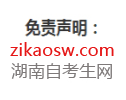More recent criticism shares Doris Lessing’s denial of The Golden Notebook as a feminist text. And many critics are aware of its scope which goes beyond feminist concerns. Ruth Whittaker remarks that reading The Golden Notebook is that of absorbing several different novels (Whittaker, 1988: 75). This observation is true because people’s responses vary according to their process of growth and changing perceptions. And The Golden Notebook is credited with the title of an “encyclopedia of ideas” (Greene, 1994: 1). Viewed in this light, the title is appropriate because The Golden Notebook takes on a lot of big issues at present, including sex, race, class, imperialism, the hope and failure of communism, mental illness and psychosis, even the art and problems of writing. All of these big things are included in one 600-page, epic-like novel. Joanne Frye’s argument also supports the view that the novel “does not argue a feminist position or even center exclusively in female experiences; instead it examines broadly the crises of the twentieth century society and the problems of characterizing those crises in novelistic form” (Frye, 1986: 172). The criticism listed above seems to prove that the novel accomplishes quite well Lessing’s ambition “to describe and present the intellectual and moral climate of the time” (Lessing, 1975: 28).
While some critics explore the themes of The Golden Notebook, others notice the innovation Doris Lessing does on the form. Because of its structure of a novel inside a novel, some critics classify The Golden Notebook into metafiction. Malcolm Bradbury is sure of its metafictional category as he says, “The Golden Notebook is no doubt a work of metafiction” (Bradbury, 2004: 380). For other people, the form of The Golden Notebook carries the theme of “fragmentation” or “breakdown” in a way that the novel itself has been fragmented into different sections. In his introduction to the Chinese version of The Golden Notebook, Chen Caiyu maintains that the form of the novel explains the content included in the novel (Chen Caiyu, 1999: 72). And Jiang Hong shares his view as to the form of the novel ( Jiang Hong, 2003: 95).
With The Golden Notebook, Doris Lessing has secured her place in the literary world. Honors from all levels and many countries heap on her ever since. In June 1995, she received an Honorary Degree from Harvard University. She was on the list of nominees for the Nobel Prize for Literature and Britain’s Writer’s Guild Award for Fiction in 1996. And the honors keep on coming: her autobiography was nominated for the 1997 National Book Critics Circle Award in the autobiography/biography category. In May 1999, she was presented with XI Annual International Catalunya Award, an award by the government of Catalunya. On December 31,1999, in the last Honors List before the new Millennium, Doris Lessing was appointed a Companion of Honor, an exclusive honor for those who have done conspicuous national service. It was officially bestowed by Queen Elizabeth II. In 2001, she was awarded the Prince of Asturias Prize in Literature, one of Spain’s most important distinctions, for her brilliant literary works in defense of freedom and Third World causes. She has also received the David Cohen British Literature Prize (http://lessing.redmood.com).
Doris Lessing is a very prolific writer. Besides The Golden Notebook, she published nineteen novels, eleven volumes of short stories, six works of nonfiction, five plays, and a volume of poetry, and two volumes of autobiography. Her works are widely translated, and she is recognized internationally as a committed novelist dealing with serious issues. Her most recent novel The Sweetest Dream was published in 2001.
The Significance of the Thesis
Many critics have discussed the themes in The Golden Notebook. In fact, widely included in the novel are familiar themes, which have been explored by different generations of writers. What is different and new about The Golden Notebook is its form, with itself echoing the content in its fragmentation so that theme and form reflect each other. As Ruth Whittaker said, “The Golden Notebook was a radical examination of the novel form” (Whittaker, 1988: 76).
However, many critics tend to downplay the significance and the function of the novel form Doris Lessing took pains to elaborate. In one of her letters to the publisher, Doris Lessing claims that The Golden Notebook is an attempt to “go beyond what has been possible” and “provides a new way of look at life” (Lessing, 1974: 20). She once again asserts in an interview that “It (The Golden Notebook) was a very highly structured book, carefully planned and the point of that book was the relation of its parts to each other” (Lessing, 1975: 51). She also accuses people of their indifference to or misunderstanding with the significance of the shape of the book as she says, “they were not interested in the shape of the novel, and the point of that shape, and what it meant” (Lessing, 1975: 51).
Then, what is the shape of the novel? And what is the point of that shape? And what does it mean? We may as well ask ourselves these questions Doris Lessing once asked us. To her regret, there appears no such article or treatise so far on a thorough exploration of the form of The Golden Notebook to do justice to Lessing’s admirable effort in enriching the novel forms and narrative techniques. Most reviews and criticism bend on the discussion about the themes in the novel while remarking on the novel form in no more than several lines. What Doris Lessing suggests to us is that the key to understanding the book lies in its form. And the writer’s own words cannot afford to be discounted.
Form usually serves as the carrier of the content and the instrument to convey the content to readers. In fact, literature transmits ideology significantly from forms. As Terry Eagleton suggests, “the true bearers of ideology are the very forms,” and “in selecting a form, the writer finds his choice already ideologically circumscribed” (Eagleton, 1976: 45). In Fredric Jameson’s view, “formal processes” “carry ideological messages of their own, distinct from the ostensible or manifest content of the works” (Jameson, 1982: 98-99). Raymond Williams describes forms as “involving social assumptions of causation and consequence” (Williams, 1977: 176). In fact, Jameson extends the ideology of form to the aesthetic act itself. He elaborates that “the production of aesthetic or narrative form is an ideological act in its own right, with the function of inventing imaginary or formal solutions to irresolvable social contradictions” (Jameson, 1982: 79).
As is shown from what are quoted above, it’s a shared view that the form an artist or a writer chooses reflects his or her perceptions and outlooks about the outside world. To sum up, the formal study of a work is not only necessary but also important to the understanding of the work and its writer. If, as Lessing claims, she tries something new in the form of The Golden Notebook, which she thinks as being overlooked by most critics of her time and not given a justified consideration, I think it’s necessary to analyze, in my thesis, the form of The Golden Notebook so as to find a key to better understand her and her marvelous work.
Format of the Thesis
The thesis is an attempt to find the plausible explanations to the problems the previous critics have overlooked, or could not foresee, or have not solved, on the study of the novel form in The Golden Notebook.
The thesis falls into three chapters. Chapter One is a survey of novel forms in literature history. Chapter Two provides an introduction to the relation between novel and painting, the theoretical background from which my thesis has been developed. Chapter Three presents a detailed study of the form in The Golden Notebook and its parallel relation with Cubism.
The Golden Notebook is to be abbreviated as GN when the quotations from it are involved.
Chapter One
Forms in Novel
If there is something new in the form of The Golden Notebook, it is necessary for us to be informed of what is old based on the survey of the evolutionary history of novel forms. In doing so, we may understand and appreciate better the innovation in the very form of The Golden Notebook.
Before our brief survey of the historical change in the novel form, it is necessary to explain the word “form” and in what sense of it that I build on my thesis.
1.1 What Is Form?
“Form” is one of the most frequently used terms in literary criticism, but also one of the most diverse in terms of its meanings. It is often used merely to designate a genre or literary type (“the lyric form”, “the short story form”), or for patterns of meter, lines and rhymes (“the verse form”, “the stanza form”). It is also, however, the term for a central critical conception. In this application, the form of a work is the principle that determines how a work is ordered and organized (Abrams, 2004: 101).
The concept of form varies according to critics’ specific assumptions and theoretical orientation. Many neoclassic critics, for example, think of the form of a work as a combination of component parts, matched to each other according to the principle of decorum (a term designating the propriety, or fitness in unity of subject matter, characters, actions and the style). In
TEL:蒋老师17773102705
扫一扫下方二维码关注湖南自考生网微信公众号、客服咨询号,即时获取湖南自考、成考、网教最新考试资讯。

关注公众号免费拿资料

微信扫一扫咨询

微信扫一扫咨询

1、鉴于各方面资讯时常调整与变化,本网所提供的信息仅供参考,实际以考试院通知文件为准。
2、本网部分内容来源于网络,如有内容、版权等问题请与本网联系,我们将会及时处理。联系方式 :QQ(393848300)
3、如转载湖南自考生网声明为“原创”的内容,请注明出处及网址链接,违者必究!